During an endurance season in which it seemed like I was constantly bedeviled by bad luck, perhaps it’s only appropriate that in the season finale — the NEO Endurance Series’ 24 Hours of Le Mans last weekend — it felt as though I was tested by something supernatural.
Let’s call them the Ghosts of Races Past. Their mission, it seemed, was to offer a shot at redemption, making sure I had learned my lessons from mistakes in old races and condemn them to their crypts once and for all.
The Ghost of Computer Demons
The first test I faced wasn’t so much a reflection of mistakes I’d made, but simply the horrible luck that had kept me out of two NEO races this season. On race day at Road America, I woke up to a computer that wouldn’t boot, which I later diagnosed as a bad cable connected to my hard drive. And at Spa, my Internet service became intermittent 30 minutes before I was scheduled to get behind the wheel, which put me on the sidelines once again.
At Le Mans, the computer booted up just fine on race morning, and I had no problems with my connection in warmup and the opening hours while my teammates Jason and Steve took their turns behind the wheel.
Just before the four-hour mark, I got behind the wheel in a NEO race for the first time in more than five months — since the season opener at Sebring. While most of the season had been a wash for me, I still had an opportunity to bookend it with successful drives.
More importantly, our team had held up remarkably well despite my bad luck, and we entered Le Mans just a few points out of the top 12 in points, which would secure us an automatic invitation to the next season.
As I hit the track to begin the first of my three scheduled double stints, there was a lot riding on my shoulders, both for me and for the team. And thankfully, those computer issues stayed away in this race. But while all was smooth in the internals of my equipment, would my own brain and body hold up just as well over 24 hours?
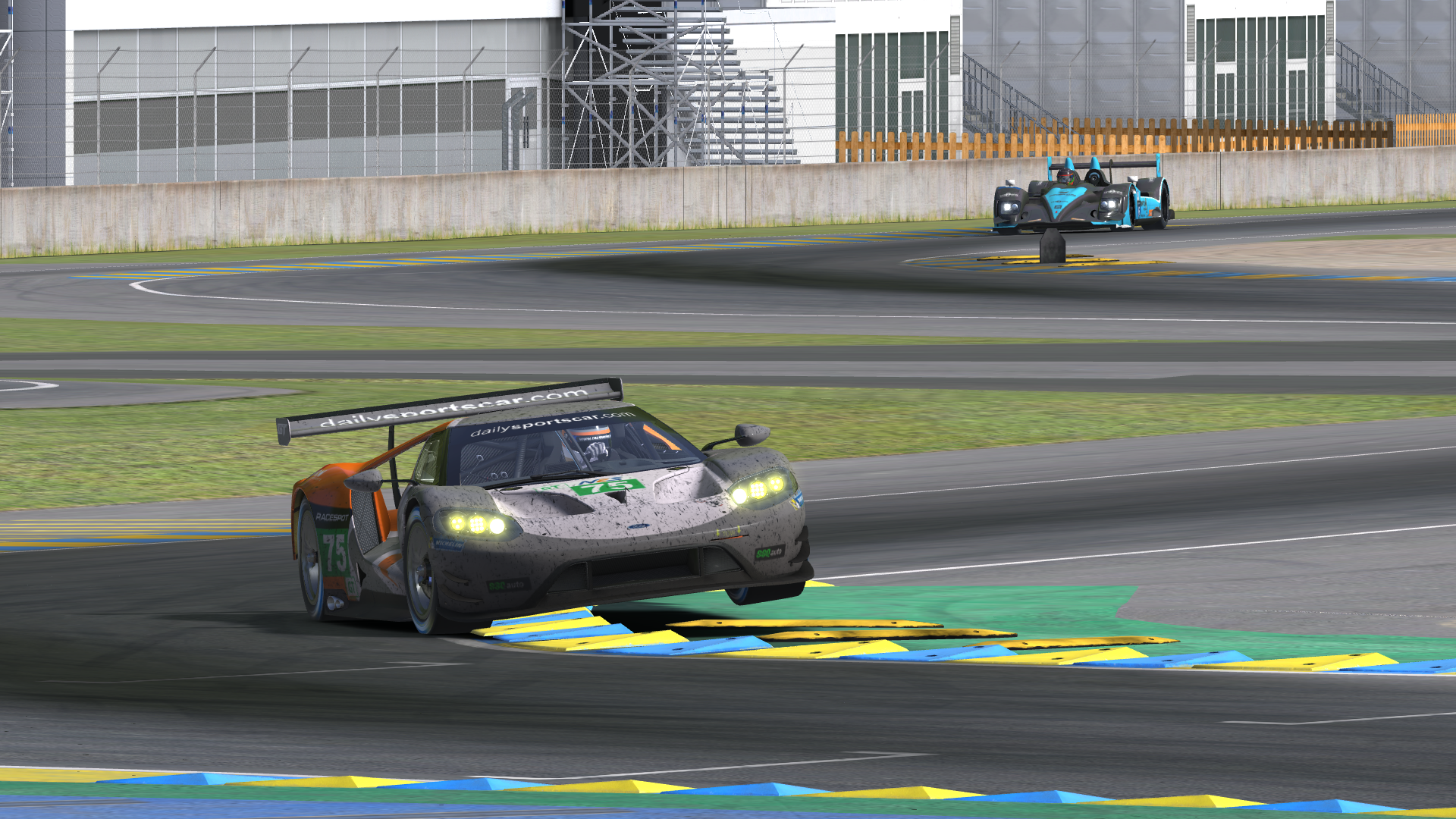
Concentration was required to tackle the Le Mans kerbs at full speed.
The Ghost of Thirsty Tanks
Much like in the real-world Le Mans race where full-course yellows have become rare, strategy often offers the best opportunity for teams to get an advantage. Eking out an extra lap of fuel per run around the eight-mile track can be tough, but it’s often worth it if it means reducing the time spent on pit road.
That’s exactly what we hoped for. Our team’s strategy was built around running 15 laps per stint, which would save us up to two pit stops over the course of the race. Early on, it was clear that most teams around us could only manage 14 laps, so our plan had potential.
But to pull it off, we had to save some fuel each run, and that hasn’t always been my strong suit. In my first full-time Power Series season on the oval side, I lost two races late in the season because I opted not to save fuel, both because of a lack of experience and a lack of skill. If only I’d gone for that strategy, my results in both races and in the championship — where I finished second — might have been different.
In the Le Mans race, a lack of fuel saving could have also proven costly and thrown our strategy off-track. Fortunately, after my early struggles, I eventually learned to love fuel conservation on both the oval and road side. That’s not to say I’m the best at it, even compared to my teammates; at times, a tendency to drag the brake means I use a bit more fuel than them. But I managed to lift, coast, and draft my way to 15 laps each stint.
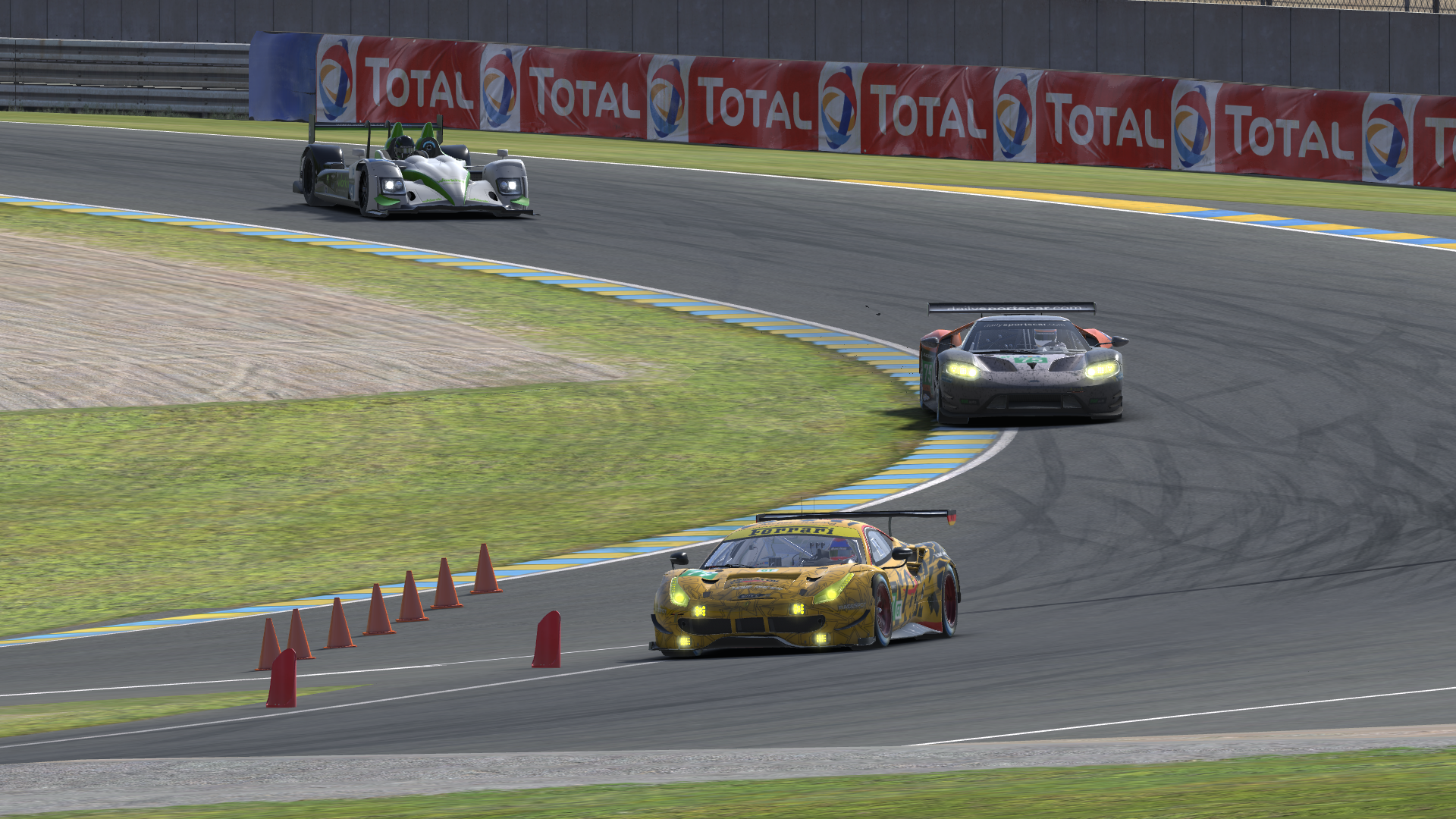
Fighting traffic through the Dunlop Curve.
Since I wasn’t closely battling any other cars during my stint — by that point in the race, the gaps through most of the field had opened up — that fuel number gave me something to work toward. It made the time pass quickly as well; two hours of driving seemed to be finished in a flash.
As my first double stint wrapped up, I was thinking that it couldn’t have gone much better. I kept to our strategy, and even though my pace didn’t set the world on fire, I had saved time in other ways, like avoiding the slowdown penalties that are so easy to come by at Le Mans.
However, the final corner defined my stint, and not in a good way. I pushed a bit too hard on pit entry, spinning the car out — thankfully, not back into traffic or into a wall — and cost us at least 10 seconds while I recovered. All the time gained through performance and driving penalty-free was thrown away with one stupid mistake.
I might have banished one ghost, but I awakened another that I’d have to face later in the race.
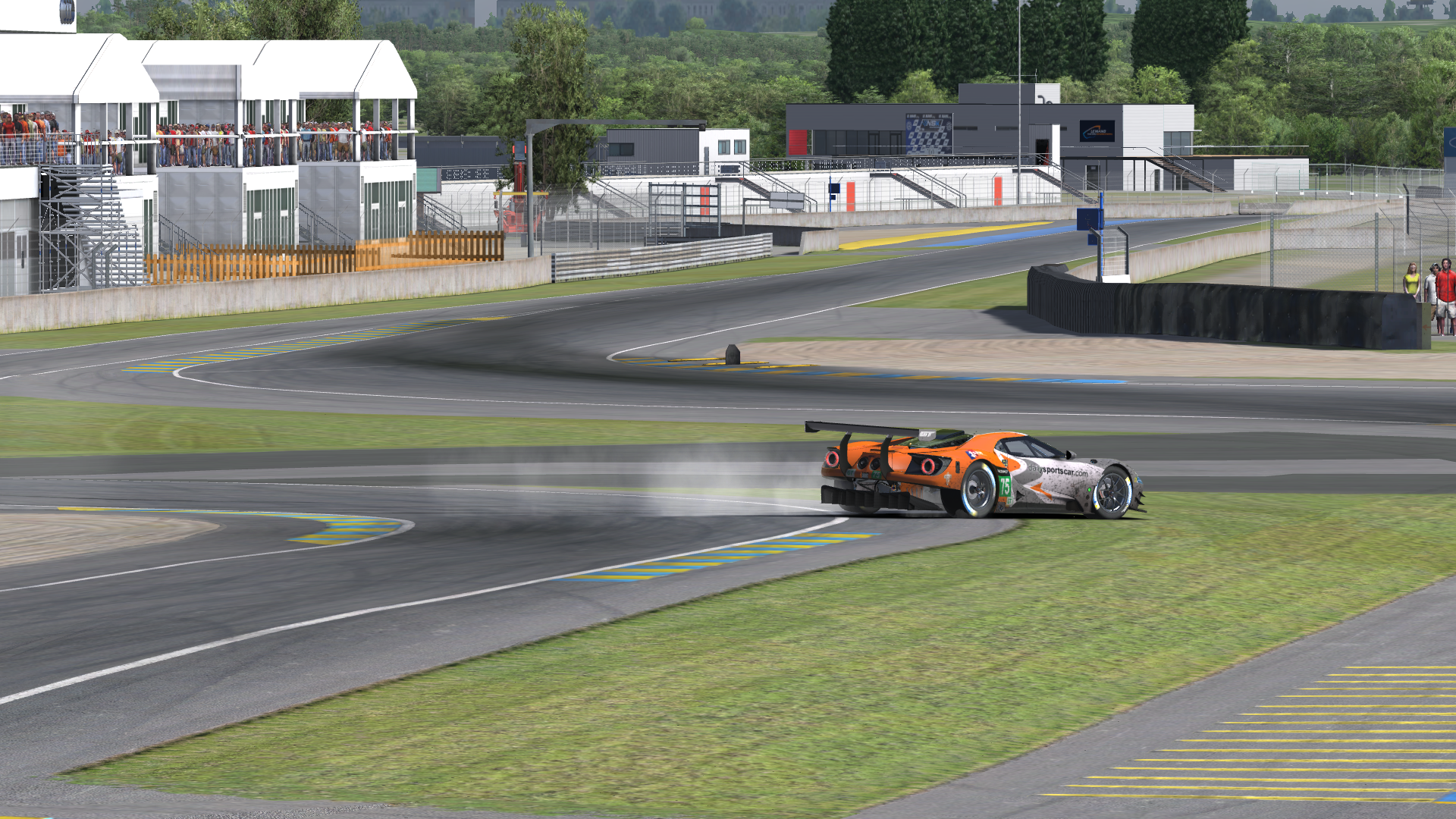
A potentially costly mistake: spinning on pit entry.
The Ghost of Tired Minds
I went to bed on Saturday night with that spin still on my mind. And with just a few hours of sleep ahead of me, I knew the chances of making another mistake would only increase once I got back in the car for my early morning shift.
I say that from experience. I’ve often told the story of crashing our race-leading car at 5 am in the 24 Hours of Spa a few years ago after a momentary lapse in concentration. But what made that incident all the more heartbreaking was how we’d gotten there.
Six hours or so before that, I was in the car and we weren’t far off of the leaders. After a frustrating encounter with a lapped car, I half-spun the car and nosed the right-front corner into the wall. It hurt our top speed and pace, and would have ended our chances of competing for the victory if not for a heroic triple stint by my teammate Karl to drag us back into contention.
In the final hour of my own triple stint that followed, I threw it all away. With so much on the line at Le Mans, including saving us from being in the gauntlet of the ultra-competitive pre-qualifying session next season, I couldn’t afford a similar mistake in this race.
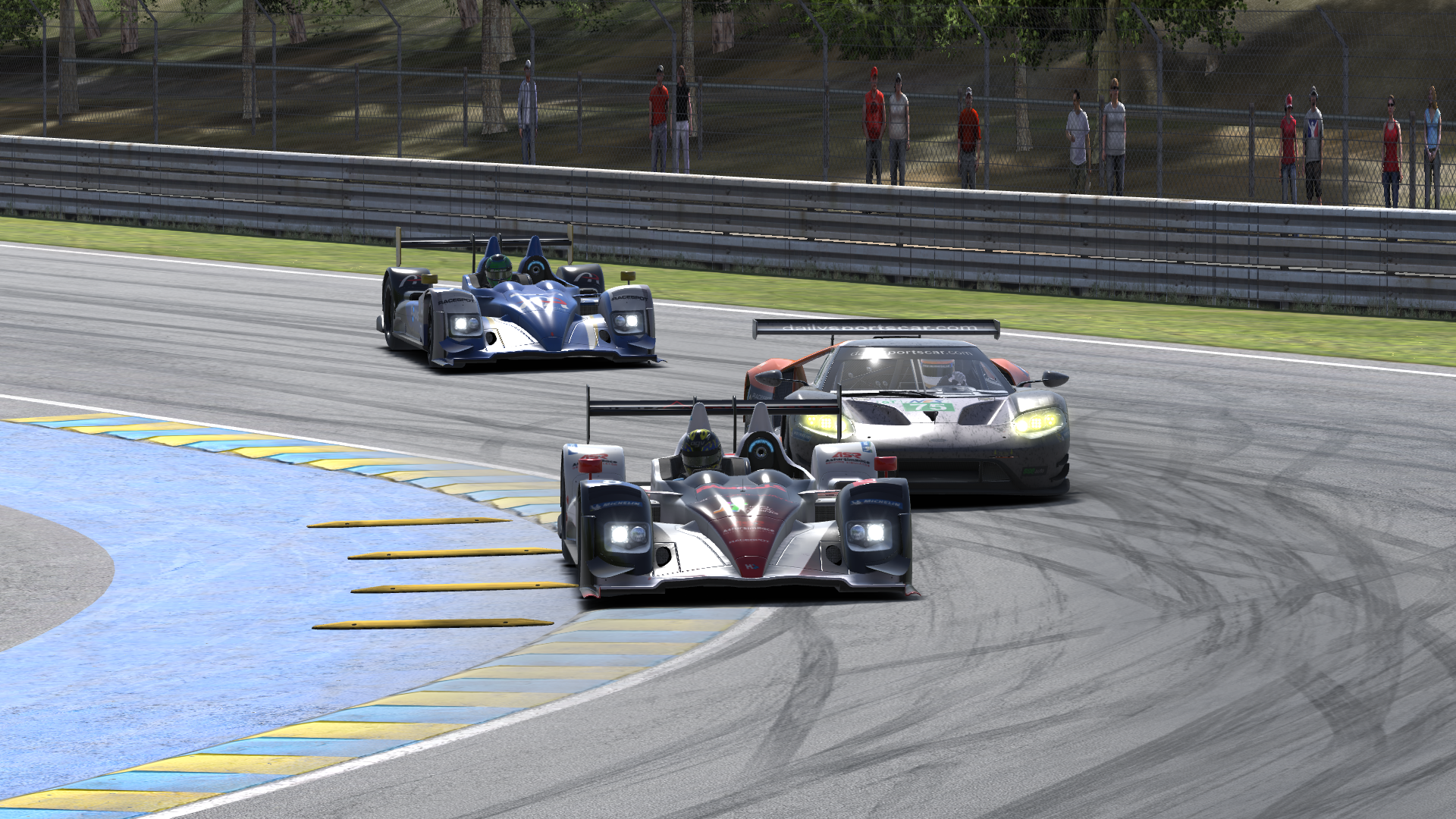
The speed difference between classes made for some scary moments in traffic.
As it turned out, Le Mans provided another scary encounter with a different car that could have resulted in disaster. Midway through my second double stint of the race around 5:30 am — after just four hours of sleep and three further hours awake — a lapping HPD a half second in front of me spun sideways entering Mulsanne corner.
Once I saw him begin to slide, I hit the brakes and briefly locked up the tires, but was able to narrowly avoid his car. If my reaction time had been slightly delayed, which can happen in those tired late-race stints, I would have hit him and trashed our goal of a decent finish in the race and the standings.
“That was almost it, boys,” I told my fellow teammates manning the graveyard shifts with me. I breathed a sigh of relief and completed my stint, bringing the car into the pits without spinning to effectively banish two ghosts — one years old, and one conceived just hours earlier — that haunted my racing history.
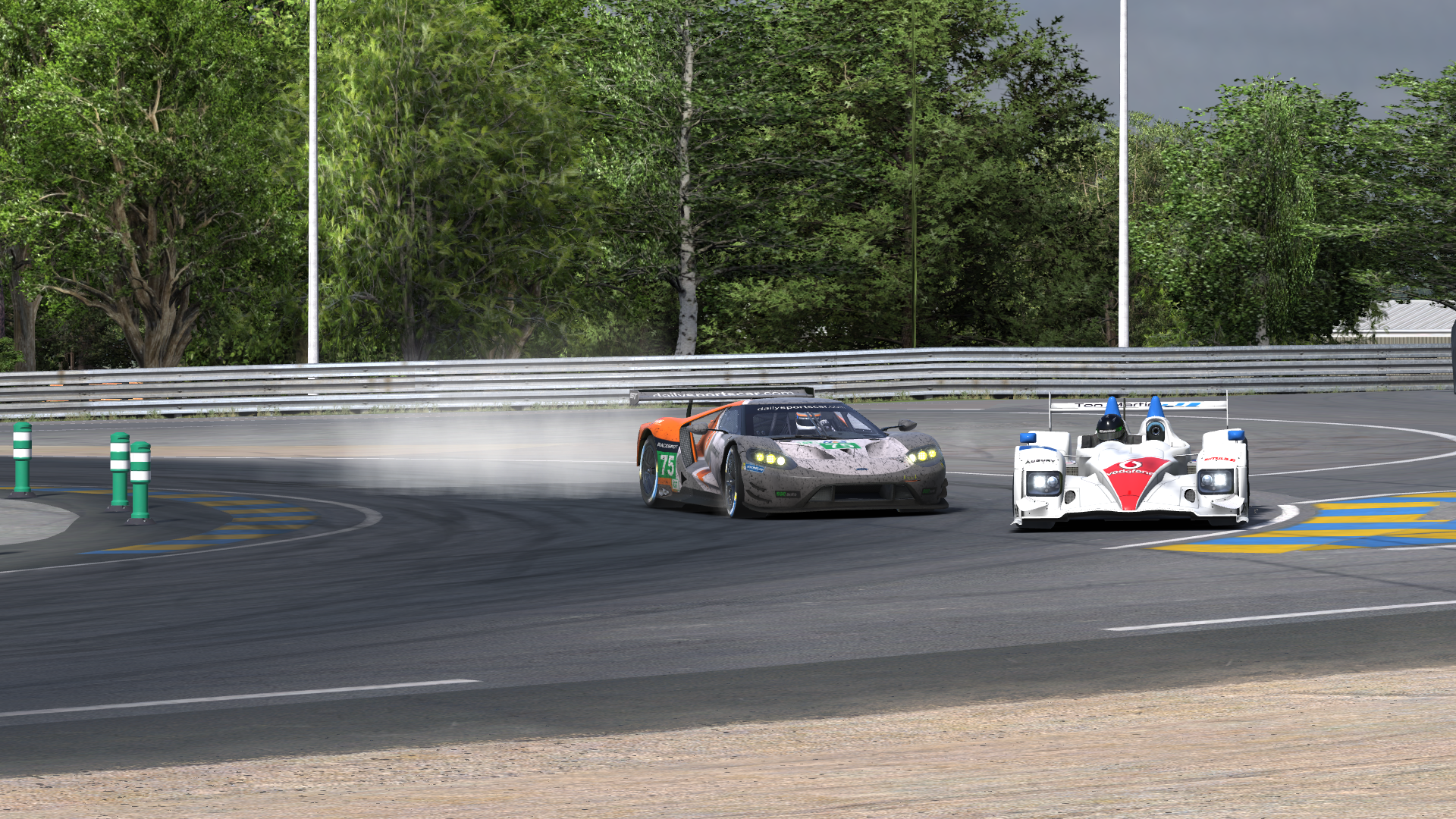
A close call with a spinning HPD in Mulsanne corner.
The Ghost of Changing Conditions
In the past few years, iRacing introduced dynamic weather and track conditions that can change the way a car drives and a track feels during a race. Granted, the changes generally haven’t been huge — maybe a few degrees of air temperature and some rubber being laid on the road — but even adapting to those conditions has at times been challenging for me.
While drivers like my Le Mans teammate Dean Moll flourished on a rubbered-in track in our Daytona 24 win and my other teammates Steve, Jason, and Karl seem to quickly get up to speed regardless of the weather, I have always been slower to acclimate.
Part of that may be due to my conservative driving style that is hesitant to push the limits, especially in longer races. My tendency to practice in largely static, default conditions may also be to blame.
In any case, it often takes me a dozen or more laps to get the feel for the weather and track conditions, and at Le Mans, I simply wouldn’t have that sort of time. After all, 12 laps around Circuit de la Sarthe is the majority of one stint.
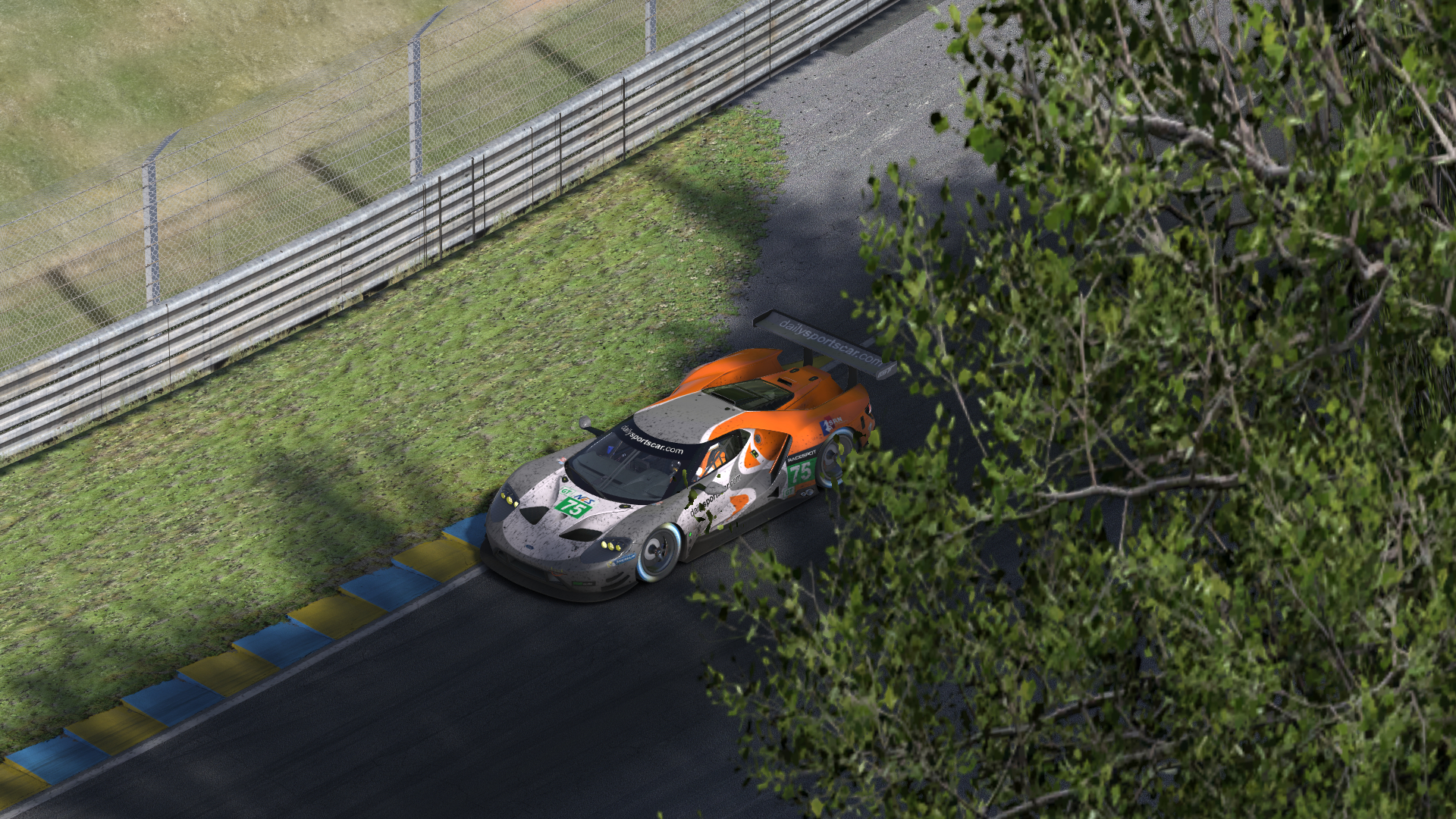
A cool, shaded track provided plenty of grip through the Porsche Curves early in the race.
When I got in the car for my first double stint, I surprised myself by running faster than expected right out of the box. My first timed lap was in the 3:51s, which is largely what Steve had been running just before me. And any time I can be within a half-second of him, I feel like I’m doing well.
When my next double stint started hours later, the conditions were quite different. The air temperature had warmed by almost 10°F and the pace had slowed by at least a second per lap. It warmed a few degrees more before my final stint, and that didn’t just affect the pace.
As the track slickened up, it also changed how the car drove. In some corners where the car had been tight earlier in the race, it became loose. In other places, it went from grippy to pushy. Where it had been sluggish to turn on corner entry, it started to slip and slide on exit.
Combined with limited sleep, it only added to the challenge of getting up to speed in a limited amount of time. And while my lap times were never able to match Steve’s, Jason’s, or the fastest drivers on track around us, I held my own.
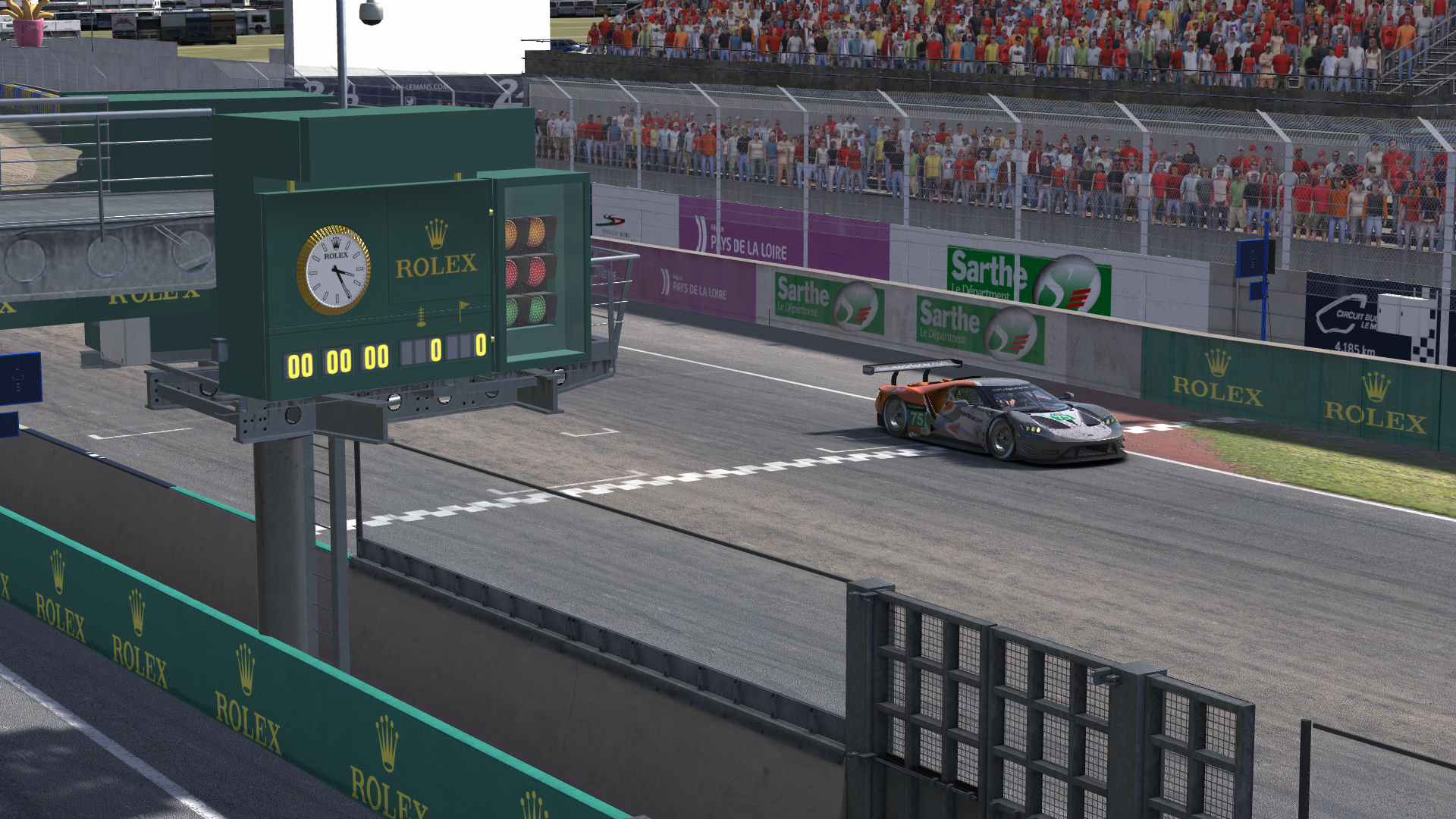
Steve brings the car across the finish line at the end of 24 hours of racing.
After 24 hours, we finished in ninth place, roughly 20 seconds ahead of tenth and 20 seconds behind eighth. In the end, my spin entering pit road hadn’t cost us a position, but a slower pace while adjusting to the track conditions certainly could have. We also managed enough points — but just barely — to clinch a position on the grid in the next NEO season.
At the beginning of this season, my goal was to not be a liability for my team. Even though my race appearances were limited to four total double stints, including three at Le Mans, I can look back at them and know that one spin notwithstanding, I achieved that goal.
As for Le Mans, I managed to tame at least a few of the spooky spirits from my racing past, effectively putting them to bed. Now, after limited sleep and many hours awake to watch, crew chief, and drive, it’s time to give myself the same treatment.